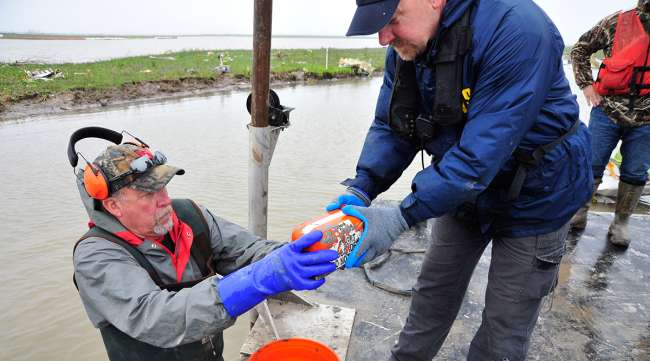Experts Doubt Turbulence Caused Crash of Cargo Jet in Texas

DALLAS — Aviation experts expressed doubt March 13 that turbulence could have caused the deadly February crash of an Atlas Air cargo plane carrying Amazon packages in Texas, suspecting human error or a massive malfunction as more likely culprits.
The National Transportation Safety Board is investigating why Atlas Air Flight 3591 suddenly dropped during its approach to a Houston airport and has not issued a cause of the crash. The federal agency has said cockpit audio and flight data suggest the pilots lost control and the plane hit turbulence in its final moments.
Atlas Air Flight 3591 was carrying packages from Miami for Amazon.com and the U.S. Postal Service, as well as giving a ride to a pilot from another airline.
The Boeing 767 struck Trinity Bay while traveling at hundreds of miles an hour — an impact that killed the three men aboard and sprayed debris through the swampy area 40 miles east of George Bush Intercontinental Airport.
The bay’s deep mud slowed investigators, and aviation safety specialists see the details already released as too little to solve the mysteries of the crash. But they think it’s enough to rule out choppy air as a likely cause.
“Airplanes operate in situations like that all the time,” John Cox, an accident investigator and retired pilot, said of turbulence the plane hit a minute before it entered its fatal drop.
NTSB data show turbulence hasn’t caused a fatal accident on an American cargo or passenger jet in the past decade. Cox and others couldn’t recall a large plane being downed by rough weather since the 1960s.
Rather than precipitation the Atlas Air pilots had maneuvered to avoid, experts said NTSB investigators likely are focused on three events in the plane’s final moments: an engine surge, a small drift up and sharp turn down.
These events are being scrutinized as countries around the world are grounding a different model of Boeing aircraft after two were involved in fatal crashes less than five months apart. On March 13, the United States and Canada joined some 40 nations in ordering all Boeing 737 Max jets grounded amid suspicions about a new automated anti-stall system.
Beyond brand, however, there appear to be limited links between the crashes.
The 767 that crashed in Texas is much older than the 737 Maxs that are being grounded. And no Atlas Air planes are equipped with the anti-stall system that’s come into question, a company spokeswoman told the Associated Press.
In their last minutes, the plane’s crew dropped altitude to avoid some precipitation and then leveled off around 6,200 feet, according to NTSB’s analysis of flight data.
Seconds later, the plane’s engines surged to “maximum thrust” and it briefly pointed its nose 4 degrees up. The jet then rapidly swung to point 49 degrees down.
NTSB said the dramatic turn came in response to a shift in the fins near the rear of the plane that control its pitch but that the underlying cause of this movement still is being investigated.
Todd Curtis, a former Boeing safety engineer who runs AirSafe.com, said the plane’s slight upward tilt might have been the pilots compensating for a hard down draft. But there would be no reason to suddenly drop the plane’s nose, he said.
The plane’s dive either was caused by a major mechanical or computer malfunction, by a pilot’s error or it was a deliberate act, Curtis said. But this last option is unlikely, he said, as it would have led the FBI to take over the investigation as a criminal probe.
A spokesman in the FBI’s Houston office, Connor Hagan, said March 14 that NTSB is continuing to lead the investigation.




